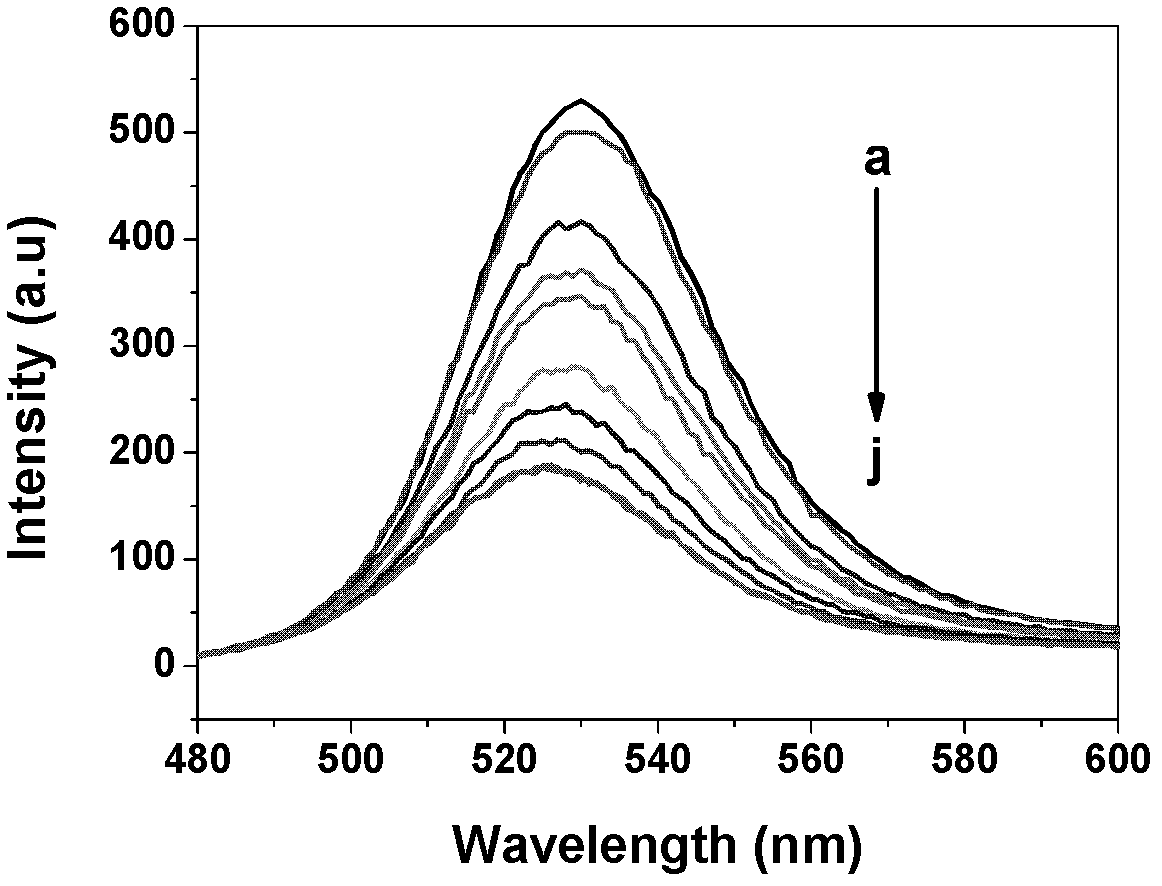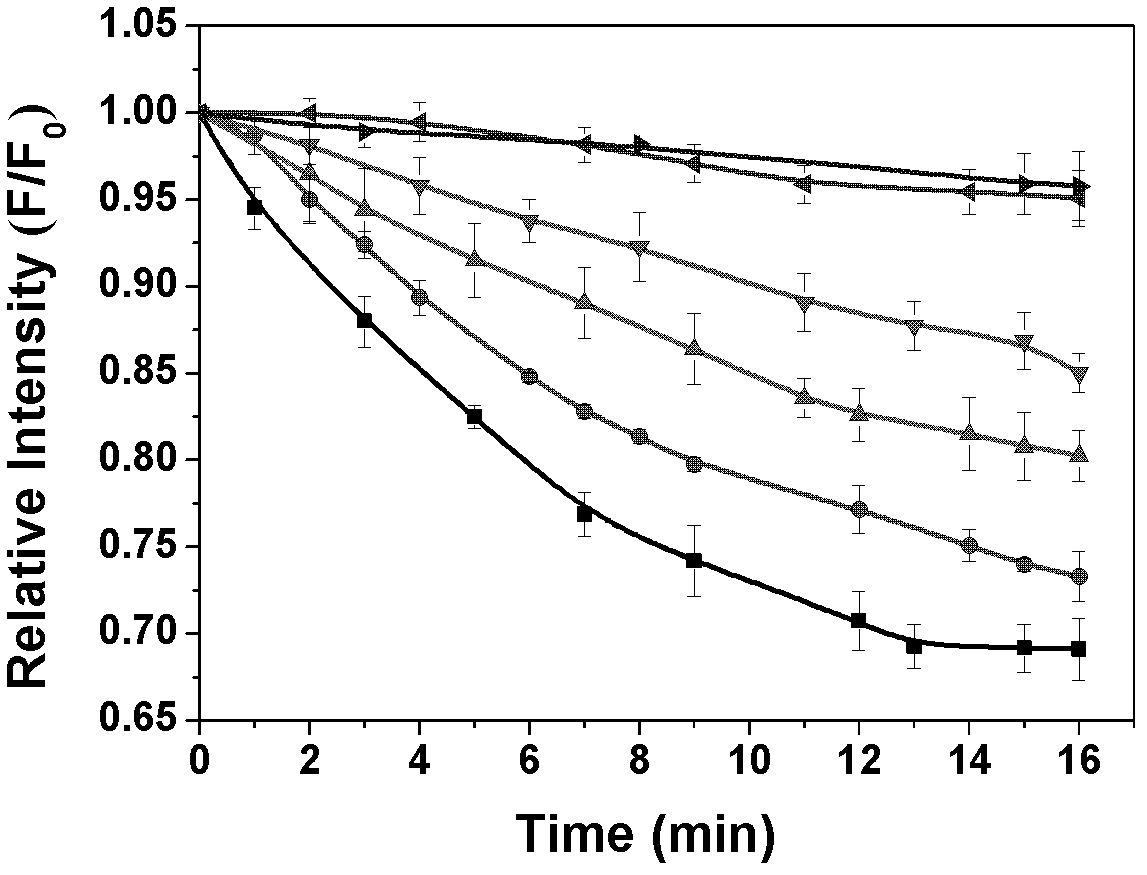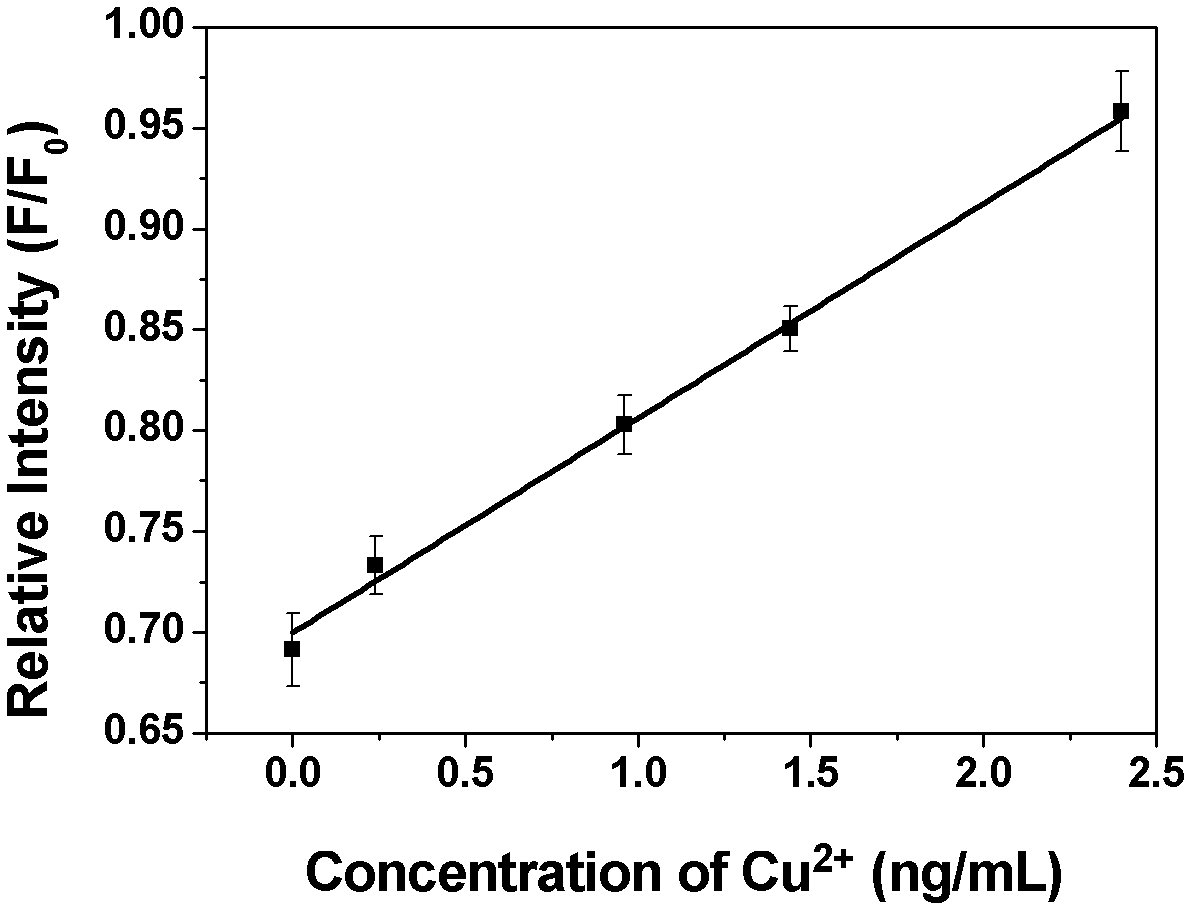Fluorescence biosensor for detecting high-sensitivity copper ionss and detection method thereof
A copper ion detection and biosensor technology, applied in the field of fluorescent biosensors, can solve problems such as low sensitivity and poor selectivity, achieve good reproducibility, reduce quenching degree, and improve selectivity
- Summary
- Abstract
- Description
- Claims
- Application Information
AI Technical Summary
Problems solved by technology
Method used
Image
Examples
specific Embodiment approach 1
[0018] Embodiment 1: The fluorescent biosensor for copper ion detection in this embodiment is made of quantum dots, enzymes and enzyme substrates, wherein the concentration of quantum dots is 10 -7 ~10 -3 mol / L, the enzyme concentration is 0.01~10U / mL, and the enzyme substrate concentration is 10 -4 ~1 mol / L.
[0019] In this embodiment, the quantum dot is one or a mixture of CdSe, CdTe, CdS, PbS, CdSeZnS, CdSeCdS, and CdSeS, wherein CdSeZnS represents a quantum dot with a core-shell structure, CdSe is the core, and the outer shell Quantum dots coated with a layer of ZnS.
[0020] In this embodiment, the enzyme is glycerol phosphate oxidase, cytochrome C oxidase, alkaline phosphatase, glucose oxidase, alcohol oxidase, sarcosine oxidase, choline oxidase, ascorbate oxidase, xanthine oxidase One of enzymes, glutathione oxidase, D-amino acid oxidase.
[0021] In this embodiment, the enzyme substrate is one of glycerophosphate, cytochrome C, glucose, methanol, sarcosine, chol...
specific Embodiment approach 2
[0022] Specific embodiment 2: In this embodiment, copper ions in water are detected according to the following steps: 1. Enzyme is added to the quantum dot solution, and then the enzyme substrate is added to measure the change of the fluorescence intensity of the quantum dots. 2. The enzyme and copper ions of different concentrations are mixed first and then added to the quantum dot solution, and then the enzyme substrate is added to measure the change of the fluorescence intensity of the quantum dot. The detection limit of copper ions was calculated by plotting the relative fluorescence intensity-copper ion concentration. where the concentration of quantum dots is 10 -7 ~10 -3 mol / L, the enzyme concentration is 0.01~10U / mL, and the enzyme substrate concentration is 10 -4 ~1 mol / L.
[0023] The two steps of this embodiment are enzymatic reaction (and the inhibition of enzyme activity) and quantum dot fluorescence quenching respectively. The first step is the reaction betw...
specific Embodiment approach 3
[0027] Specific embodiment three: the concentration of quantum dots in the copper ion detection fluorescent biosensor of the present embodiment is 3.9 × 10 -5 mol / L, the enzyme concentration is 1U / mL, and the enzyme substrate concentration is 4.92×10 -3 mol / L.
[0028] In this embodiment, when the enzyme and the substrate are added to the quantum dot solution, the fluorescence of the quantum dot is significantly reduced, such as figure 1 shown. However, the enzyme and substrate itself have no significant effect on the fluorescence intensity of quantum dots, such as figure 1 As shown in (b), the fluorescence quenching of quantum dots should be caused by the hydrogen peroxide produced by the enzyme-catalyzed substrate.
PUM
| Property | Measurement | Unit |
|---|---|---|
| quantum dot | aaaaa | aaaaa |
Abstract
Description
Claims
Application Information
 Login to View More
Login to View More - R&D
- Intellectual Property
- Life Sciences
- Materials
- Tech Scout
- Unparalleled Data Quality
- Higher Quality Content
- 60% Fewer Hallucinations
Browse by: Latest US Patents, China's latest patents, Technical Efficacy Thesaurus, Application Domain, Technology Topic, Popular Technical Reports.
© 2025 PatSnap. All rights reserved.Legal|Privacy policy|Modern Slavery Act Transparency Statement|Sitemap|About US| Contact US: help@patsnap.com



